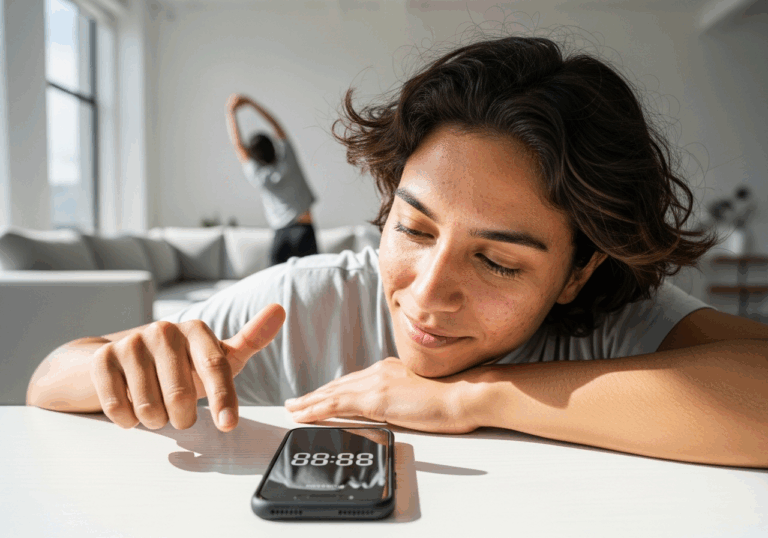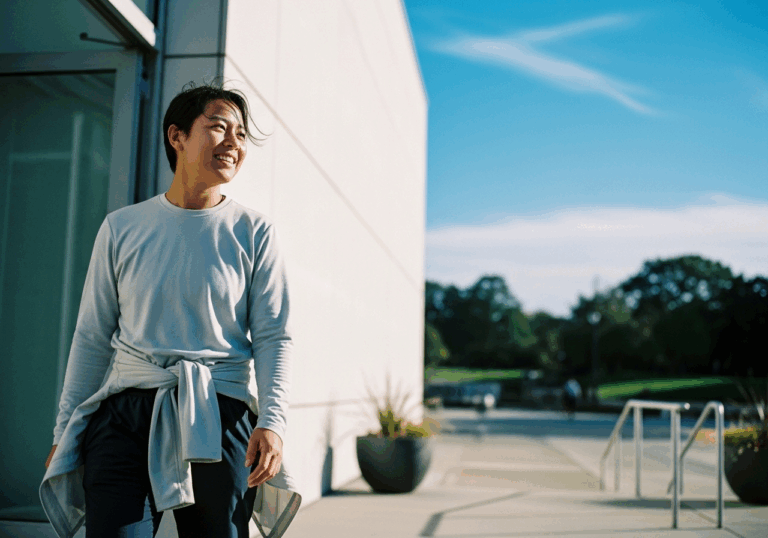Science-Backed Tips
Bright Light Therapy Boosts Mood in SAD Patients
2.5 hours of morning light reduces fatigue by 10%.
📊 Did you know?
💡 Why It Matters
1️⃣
Improving mood and reducing fatigue can enhance daily functioning and quality of life for SAD patients.
2️⃣
Lowering resting metabolic rate may contribute to metabolic stabilization, supporting overall energy levels.
3️⃣
Effective light therapy can reduce the need for pharmacological interventions in managing SAD.
✅ Try These Micro-Tips
🎯
Engage in 2.5 hours of bright light exposure each morning.
🎯
Use a light therapy box that emits at least 2,500 lux.
🎯
Maintain this routine for at least 9 consecutive days for optimal results.
🎯
Consider combining light therapy with other mood-enhancing activities like exercise.
📚 The study
A study conducted by Chow, Ekanayake, and Hackett (2024) evaluated the effects of morning light exposure on metabolic rates and mood in individuals suffering from SAD.
Participants engaged in 2.5-hour sessions of bright light therapy each morning for a minimum of nine days. The results were encouraging, revealing a notable decrease in resting metabolic rate (RMR) compared to baseline measurements.
Additionally, participants experienced an approximate 10% improvement in fatigue levels, highlighting the potential of light therapy to enhance overall emotional wellbeing.
This metabolic stabilization not only supports energy levels but also plays a crucial role in improving mood, making daily functioning more manageable for those affected by SAD.
The significance of these findings cannot be overstated, as effective light therapy may reduce the reliance on pharmacological interventions, offering a natural alternative for managing symptoms of SAD.
By harnessing the power of bright morning light, individuals can take proactive steps towards enhancing their quality of life, combating fatigue, and uplifting their mood during the darker months of the year.
❓ Frequently Asked Questions ❓
Learn more
What is the effect of bright morning light on SAD patients?
Bright morning light exposure of at least 2,500 lux for 2.5 hours can significantly reduce resting metabolic rate in patients with Seasonal Affective Disorder (SAD). This exposure also improves mood and reduces fatigue by approximately 10%.
How long should I engage in light therapy for it to be effective?
For optimal results, it is recommended to maintain a routine of 2.5 hours of bright light exposure each morning. This should be done for at least 9 consecutive days.
What is the significance of lowering resting metabolic rate in SAD patients?
Lowering the resting metabolic rate can contribute to metabolic stabilization, which supports overall energy levels. This stabilization is crucial for enhancing emotional well-being and daily functioning.
Can light therapy reduce the need for medication in SAD treatment?
Effective light therapy can potentially reduce the need for pharmacological interventions in managing Seasonal Affective Disorder. This makes it a valuable alternative or complement to traditional medication.
What type of light therapy box should I use?
You should use a light therapy box that emits at least 2,500 lux for effective treatment. This intensity is essential for achieving the desired metabolic and mood improvements.
How does light therapy improve mood and reduce fatigue?
Light therapy improves mood and reduces fatigue by influencing biological processes related to circadian rhythms and serotonin levels. This can lead to enhanced daily functioning and overall quality of life for SAD patients.
Is it necessary to combine light therapy with other activities?
While light therapy can be effective on its own, combining it with other mood-enhancing activities like exercise may yield even better results. This holistic approach can further support emotional well-being.
What are the expected outcomes of a 2.5-hour light therapy session?
After a 2.5-hour session of bright light exposure, patients can expect a decrease in resting metabolic rate and an improvement in fatigue by about 10%. These outcomes contribute to better energy levels and mood stabilization.
How does light exposure affect energy levels in SAD patients?
Bright light exposure helps regulate circadian rhythms and metabolic processes, which can enhance energy levels in SAD patients. This regulation is essential for combating fatigue and improving overall well-being.
What should I do if I don’t see improvements from light therapy?
If you do not see improvements after following the light therapy regimen, consider consulting a healthcare professional for further evaluation. They may recommend adjustments to your treatment plan or explore additional therapeutic options.





